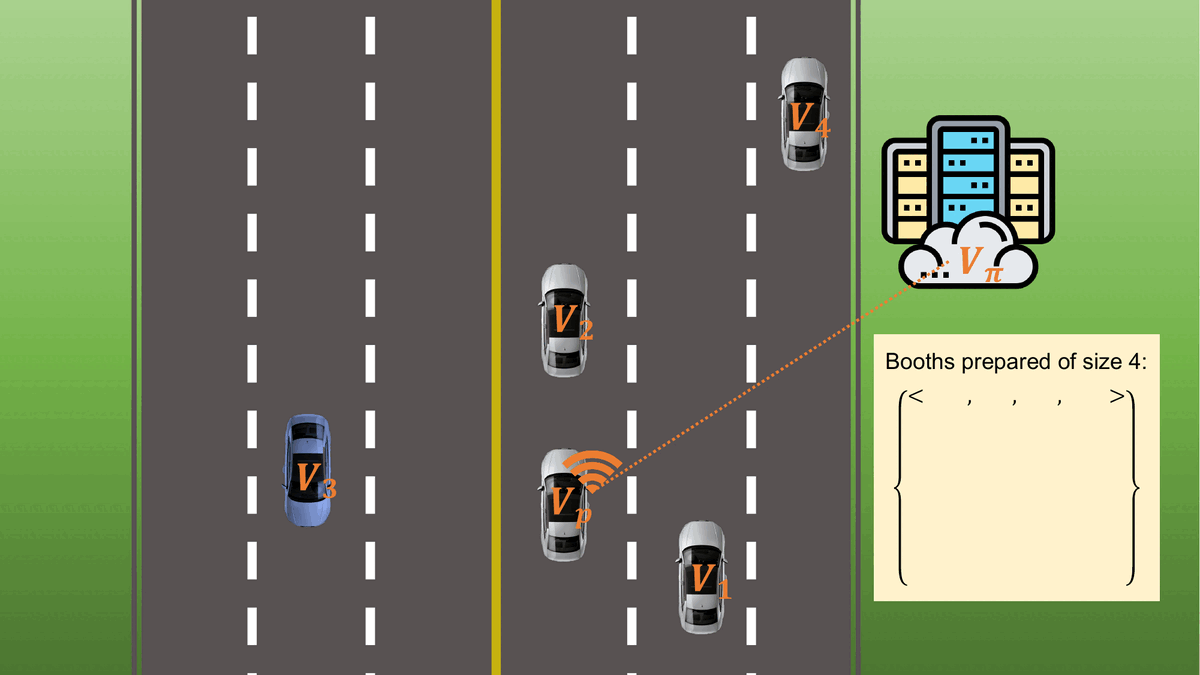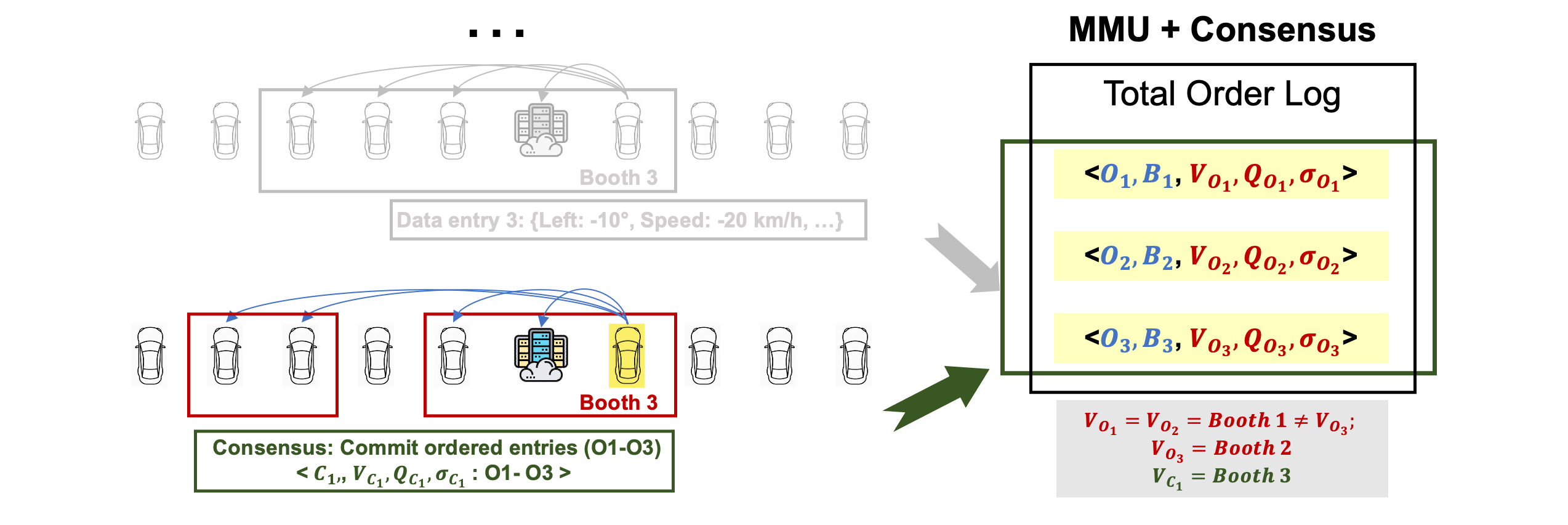V-Guard: An Efficient Permissioned Blockchain for Achieving Consensus under Dynamic Memberships in V2X Networks
V-Guard achieves high performance operating under dynamically changing memberships, targeting the problem of vehicles' arbitrary connectivity on the roads. When dealing with membership changes, traditional BFT algorithms (e.g., PBFT and HotStuff) must stop to update system configurations using additional membership management approaches, thereby suffering from severe performance degradation.
In contrast, V-Guard integrates the consensus of membership management into the consensus of data transactions. Compared to traditional BFT algorithms, V-Guard not only achieves consensus for data transactions but also for their residing membership configurations.
# Consensus target of tradition BFT algorithms: <data transactions>
# Consensus target of V-Guard: <data transactions, membership profiles>
The integration makes V-Guard achieve consensus seamlessly under changing members (e.g., with joining or leaving vehicles) and produces an immutable ledger recording traceable data transactions with their corresponding membership profiles.
V-Guard develops a Membership Management Unit (MMU) that keeps track of available vehicle connections and manages membership profiles. The MMU describes a membership profile that contains a set of vehicles as a booth. Below illustrates the management of booths (of size 4).
In the below example, the yellow car is the proposer, and the MMU manages 10 members. The consensus target are the data (in blue font) and membership (in red font), where O is the orderingID (sequence #), B is the data batch, V is the booth, Q is the quorum, and Sigma is the threshold signature.
Ordering instances can take place in different booths. E.g., when the proposer conducts consensus for data entry 1, the ordering takes place in Booth 1. When Booth 1 is still available, the next ordering instance reuses it (e.g., data entry 2). However, when Booth 1 becomes unavailable (e.g., some vehicles go offline), the MMU will provide a new booth (i.e., Booth 2) for the next ordering instance.
Consensus instances are executed periodically as "shuttle buses" with a sole purpose of committing the entries appended on the total order log. A consensus instance (C) can also operate in a different booth where the new members will scrutinize the signatures of included entries that they have not validated previously.
GoLang should have been properly installed with GOPATH and GOROOT. The GoLang version should be at least go1.17.6. In addition, three external packages were used (check out go.mod).
// threshold signatures
go get go.dedis.ch/kyber
// logging
go get github.com/sirupsen/logrus
// some math packages
go get gonum.org/v1/gonum/
Below shows an example of running a V-Guard instance with a booth of size 4 and 6 initial available connections. The quorum size of a booths of size 4 is 3, so the threshold is set to 2, as the proposer is always included.
// Assume the downloaded folder is called "vguardbft"
// First, move the keyGen folder outside of vguardbft.
mv keyGen ../
// Then, go to "keyGen" and generate keys
cd ../keyGen
go build generator.go
// Keys are private and public keys for producing and
// validatoring threshold signatures where t is the threshold
// and n is the number of participants
./generator -t=2 -n=6
// A "keys" folder should be generated with 6 private keys and 1 public key
// Privates keys: pri_#id.dupe
// Public key: vguard_pub.dupe
// Now copy the "keys" folder into the "vguardbft" folder
cp -r keys ../vguardbft/
// Compile the code in "vguardbft" using the build script
cd ../vguardbft
./scripts/build.sh
// Next, create a log folder
mkdir logs
// Finally, we can start running a V-Guard instance by starting
// a proposer, which always has an ID of 0. The script takes
// two parameters: $1=ID; $2=role (proposer: 0; validator: 1)
./scripts/run.sh 0 0 // this starts a proposer
// run 5 validators
./scripts/run.sh 1 1 // this starts a validator whose ID=1
./scripts/run.sh 2 1 // this starts a validator whose ID=2
./scripts/run.sh 3 1
./scripts/run.sh 4 1
./scripts/run.sh 5 1
Check out parameters.go for further parameters tuning.
The project is under a double-blind review process. We temporarily redacted the deployment details to preserve anonymity.


